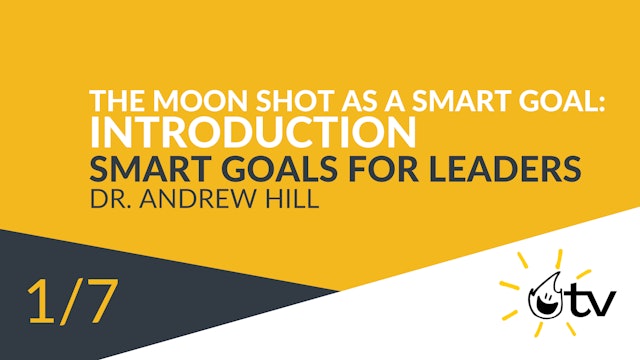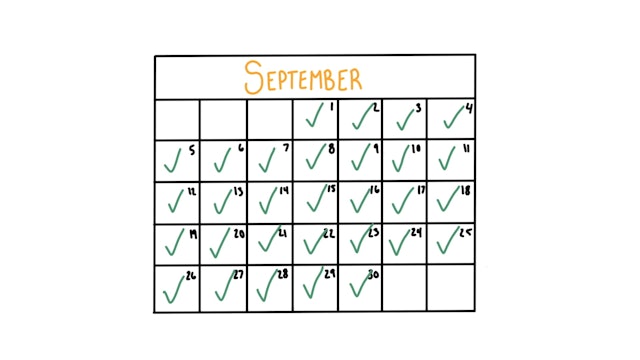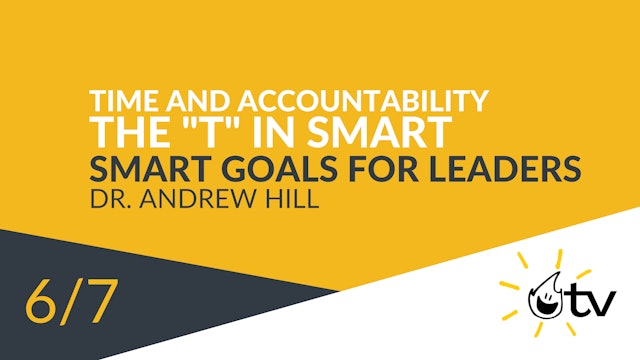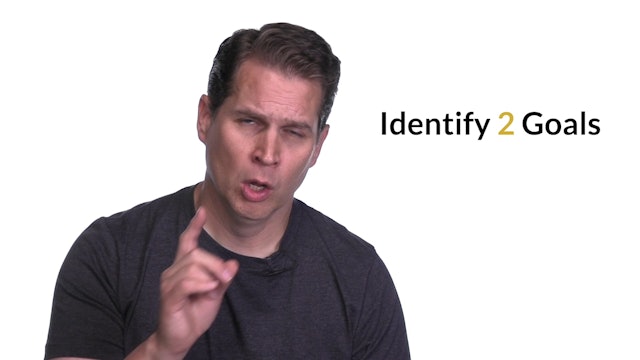SMART Goals for Leaders
As a leader, developing and setting goals is a given. Without goals, it's much more difficult to progress towards success. In this program, Dr. Andrew Hill explains the SMART framework for setting goals. SMART is an acronym for Specific, Measurable, Achievable, Relevant, and Time-Bound. Using the example of President John F. Kennedy’s goal of the U.S. landing on the moon by the end of the 1960s, Andrew explores how to develop SMART goals.
-
Introduction to SMART Goals
A SMART goal is Specific, Measurable, Achievable, Relevant, and Time-bound. SMART goals will help you and your teams be more focused and productive.
-
How Specific is "Specific"? The "S" in SMART
We all want to be better, but what does "better" mean? When we set SPECIFIC goals, we give ourselves clear, discrete things to do. Being specific is essential to a good goal.
-
Measuring What Counts: The “M” in SMART
If we can't measure a goal, it's very hard to know whether we're making progress, much less whether we have achieved it or not. Make sure to include measurable elements in your goals.
-
Knowing What is Achievable Before You Try: The "A" in SMART
One of the hardest things about setting a great goal is setting the right level of difficulty. You want to push yourself and your teams, but not too hard; you want to stretch yourselves, but not to the breaking point. So you want your goal to be challenging, but ACHIEVABLE--the "A" in SMART.
-
"We Choose the Moon"- Relevance: The "R" in SMART
A SMART goal is "RELEVANT", meaning that it has a clear and coherent connection to success, whether it's for an individual, a team, or the organization. Sometimes, though, you need to craft a story to help people understand the relevance of a goal.
-
Time and Accountability: The "T" in SMART
I don't know about you, but for me, deadlines are essential to getting anything done. And a deadline is a crucial part of a SMART goal.
-
Setting Your Own SMART Goals
Set your own SMART goals: one for yourself, and one for your team or organization.
-
Andrew Hill Bio
745 KB
Before co-founding BurnBright, Andrew was a professor at the U.S. Army War College, where he taught senior national security professionals. As the War College's first Chair of Strategic Leadership, Andrew's research focused on connecting people, strategy, and innovation. He has a doctorate from H...










